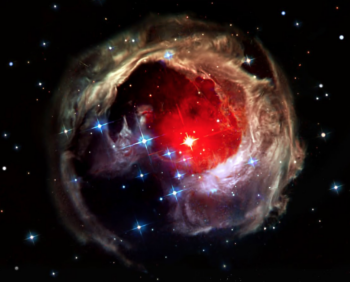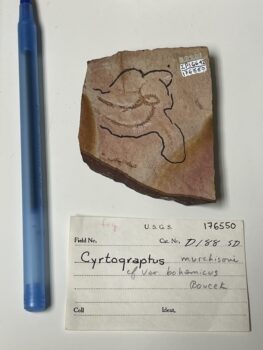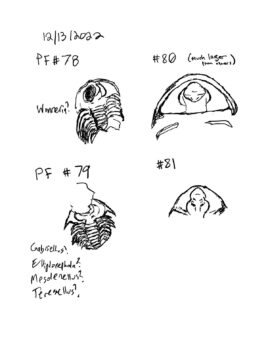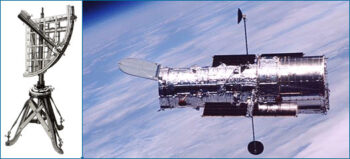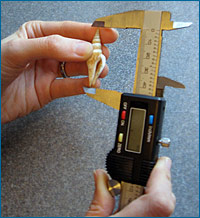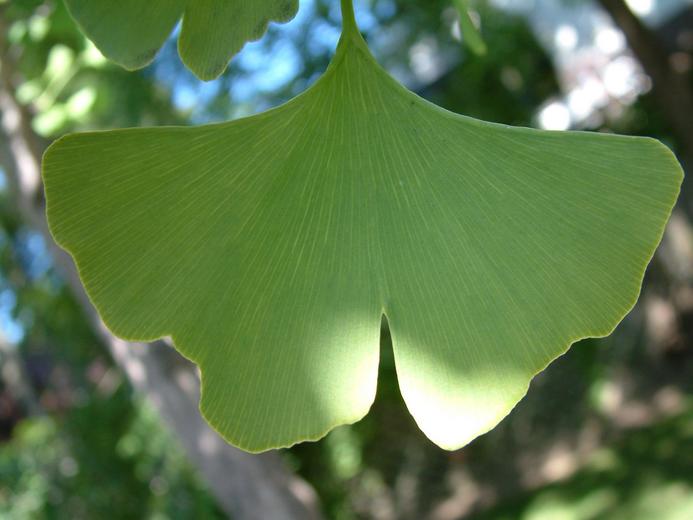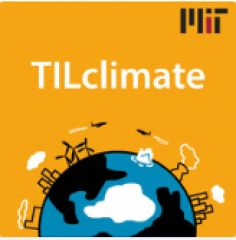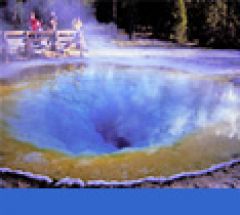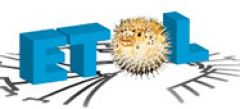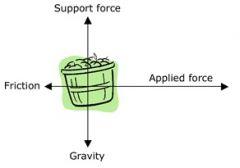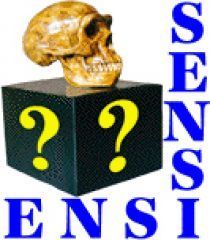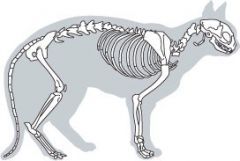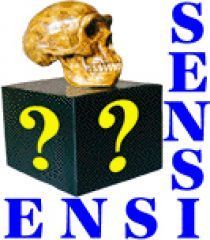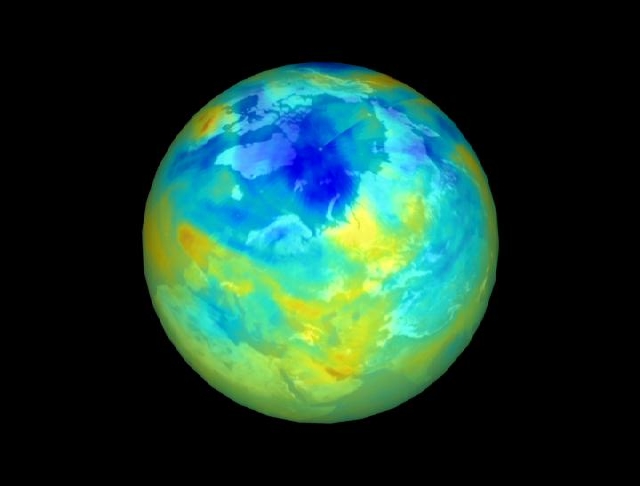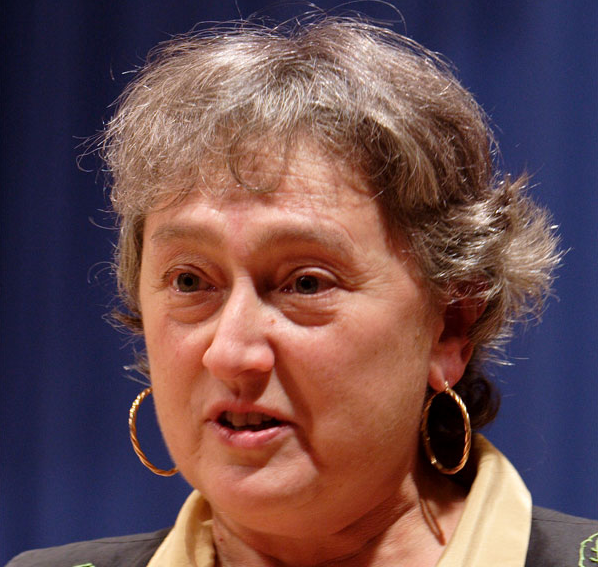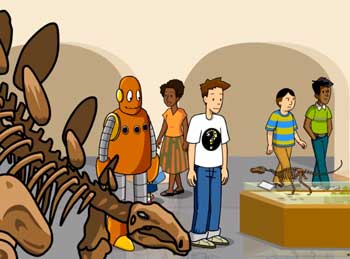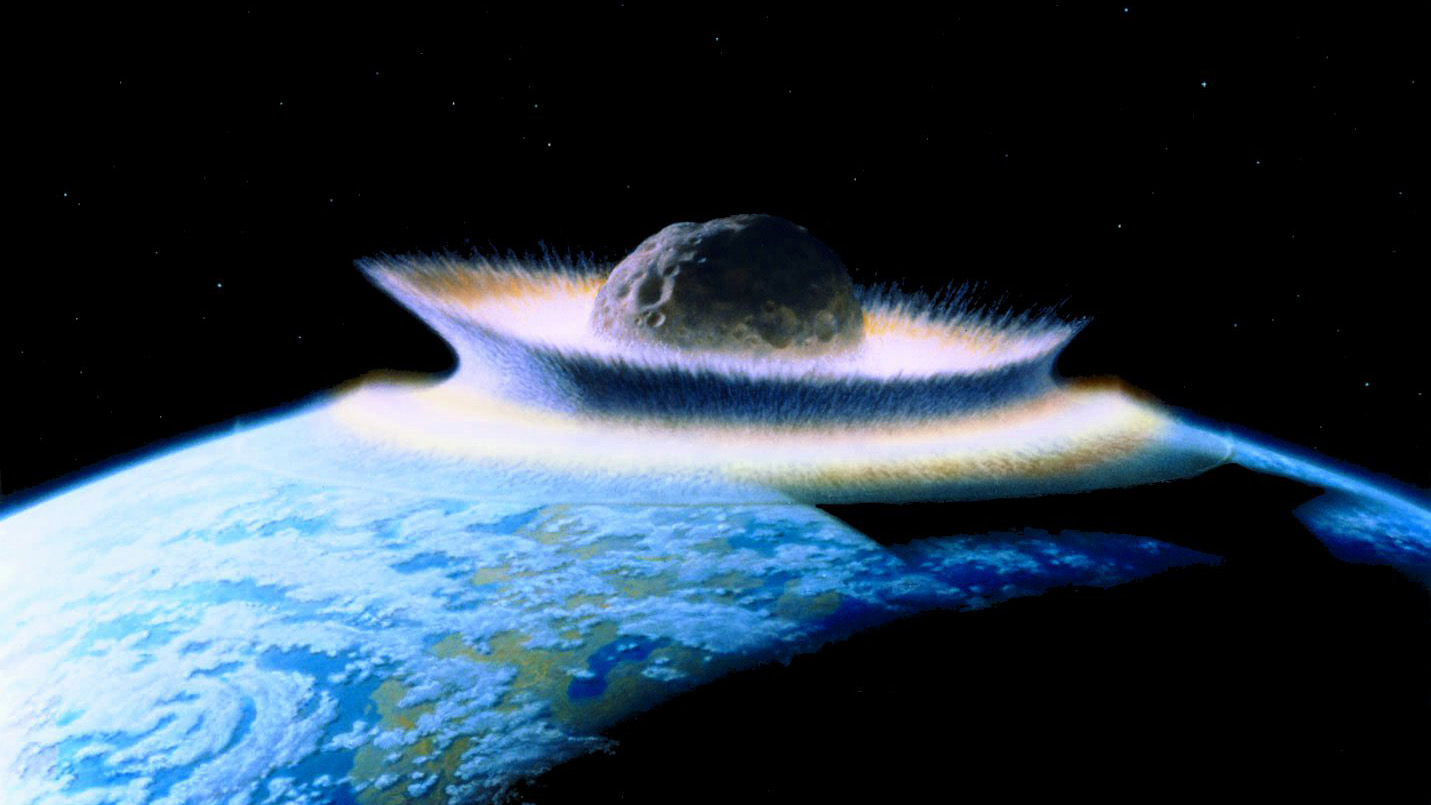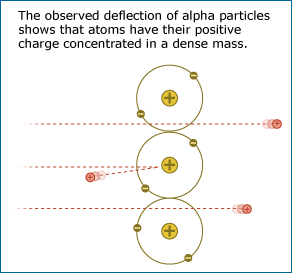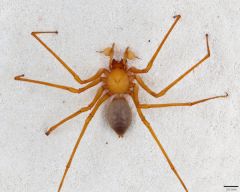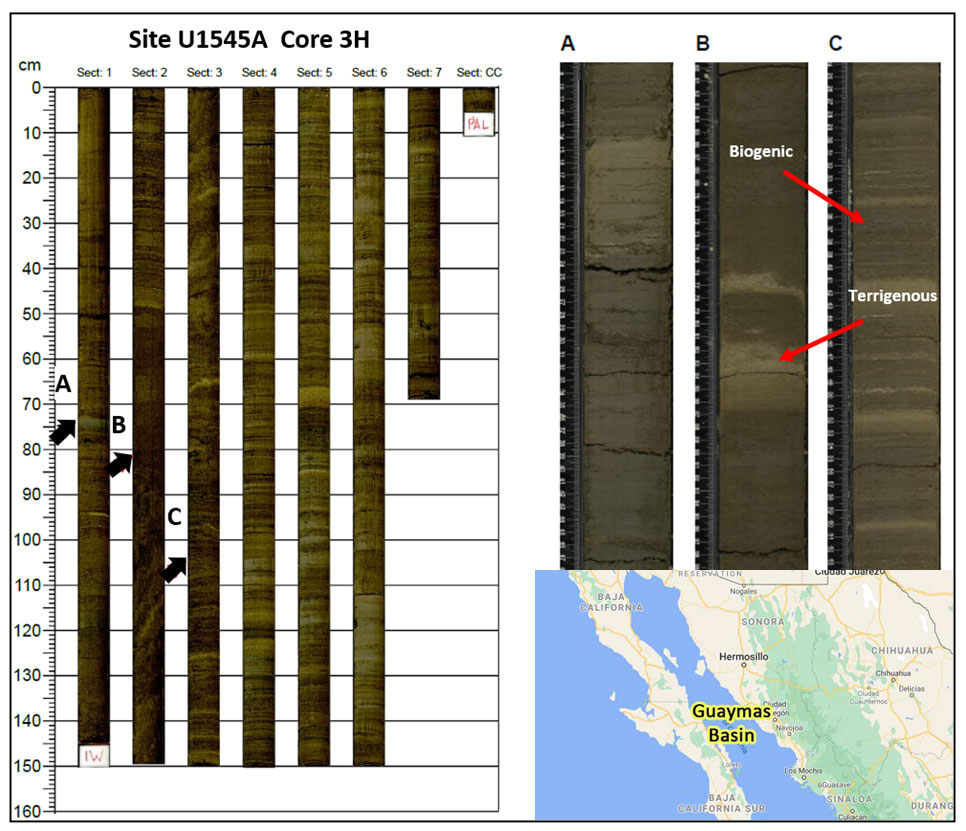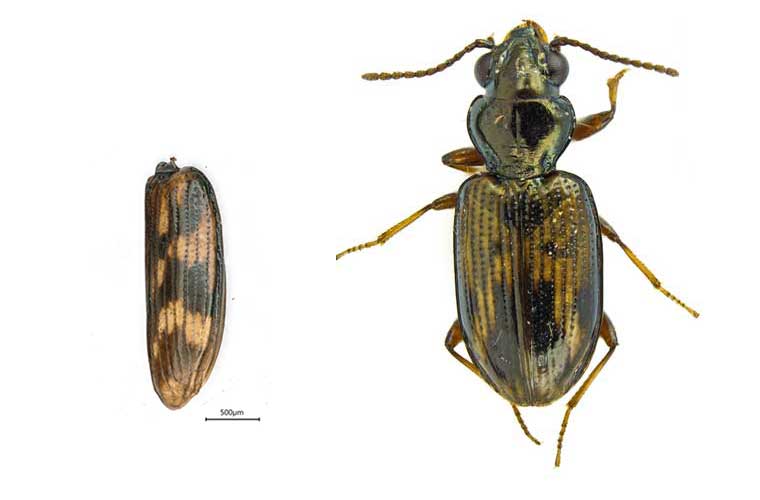Search by:
To search for teaching materials that address particular concepts in our conceptual framework, visit the teaching guide for your grade level:
K-2, 3-5 , 6-8, 9-12, or College
Found 37 resources:
Luminous
Grade Level(s):
- 9-12
- College
Source:
- Sam Smartt
Resource type:
- classroom activity
- Science Story
- video
Discipline:
- Space science
Time: 2-8 hours
Overview
The film LUMINOUS (now freely available through many libraries and the Kanopy platform) tells the story of astronomer Larry Molnar as he investigates a distant, double-star system, about which he makes a daring and explosive prediction. Interviews with Dr. Molnar’s diverse set of colleagues, collaborators, and skeptics highlight science as a community and intensely human endeavor, debunking the myth of the lone scientist conducting dispassionate research. The Luminous Science Education Toolkit provides classroom activities to support students' interpretation of the film.
Bill Berry and the construction of geologic time
Grade Level(s):
- 6-8
- 9-12
- College
Source:
- UC Museum of Paleontology
Resource type:
- Science Story
Discipline:
- Earth science
Time: 5 minutes
Overview
This Science Short describes how index fossils can help us test hypotheses about long past events that we cannot directly observe. Get tips on using Science Stories in class.
Piecing together fossil puzzles in a mysterious museum cabinet
Grade Level(s):
- 9-12
- College
Source:
- UC Museum of Paleontology
Resource type:
- Science Story
Discipline:
- Earth science
Time: 5 minutes
Overview
This Science Short illustrates how paleontologists visualize, tabulate, and share raw data about fossils. Get tips on using Science Stories in class.
Bundle up your hypotheses
Grade Level(s):
- 9-12
- College
Source:
- UC Museum of Paleontology
Resource type:
- Science Story
Discipline:
- Space science
Time: 20 minutes
Overview
Teach about how science tests hypotheses and assumptions in different combinations, using an example from the history of astronomy. Get tips on using Science Stories in class.
Fair tests: A do-it-yourself guide
Grade Level(s):
- 6-8
- 9-12
- College
Source:
- UC Museum of Paleontology
Resource type:
- Science Story
Time: 15 minutes
Overview
Teach about test design in science using an example from everyday life: comparing chocolate chip cookie recipes. Get tips on using Science Stories in class.
Fair tests in physics: Examining eclipses
Grade Level(s):
- 9-12
- College
Source:
- UC Museum of Paleontology
Resource type:
- Science Story
Discipline:
- Physical Sciences
- Space science
Time: 15 minutes
Overview
Teach about test design in the field of physics. Get tips on using Science Stories in class.
Fair tests in the fossil record: Avoiding extinction
Grade Level(s):
- 9-12
- College
Source:
- UC Museum of Paleontology
Resource type:
- Science Story
Discipline:
- Earth science
- Life Science
Time: 15 minutes
Overview
Teach about test design in the field of paleontology. Get tips on using Science Stories in class.
Fair tests in the field of medicine: Aiding Alzheimer patients
Grade Level(s):
- 9-12
- College
Source:
- UC Museum of Paleontology
Resource type:
- Science Story
Discipline:
- Life Science
Time: 15 minutes
Overview
Teach about experimental design in the field of medicine. Get tips on using Science Stories in class.
Amazon fly
Grade Level(s):
- 6-8
- 9-12
- College
Source:
- UC Museum of Paleontology
Resource type:
- lab activity
Discipline:
- Life Science
Time: 10-15 minutes
Overview
This short activity quickly engages the participants in the process of developing testable hypotheses. Students come up with multiple hypotheses to explain a set of observations and figure out how to test these hypotheses.
Clouds, Models, and Climate Change
Grade Level(s):
- 9-12
Source:
- MIT Climate Portal
Resource type:
- classroom activity
Discipline:
- Earth science
Time: up to 2 hours
Overview
How do clouds form? How are clouds affected by (and how do they affect) climate change? Students create a cloud in the classroom, and then investigate climate models and real-time cloud observation data.
Climate Models and Uncertainty
Grade Level(s):
- 9-12
Source:
- MIT Climate Portal
Resource type:
- classroom activity
Discipline:
- Earth science
Time: up to 2 hours
Overview
Earth's climate system is enormously complex, and scientists develop climate models to understand how climate change will play out in different parts of the world. Students play a climate resilience game, and then explore the Intergovernmental Panel on Climate Change’s 5th Assessment Report to learn more about how climate scientists handle uncertainty in models.
Dino-Data
Grade Level(s):
- 6-8
Source:
- UC Museum of Paleontology
Resource type:
- classroom activity
Discipline:
- Earth science
- Life Science
Time: 3-4 class periods
Overview
Students examine data about dinosaurs and hypothesize about what the data can tell them. Students modify their hypotheses as more information is revealed and review what they have learned about how science works.
Designing your very own science experiment
Grade Level(s):
- 9-12
Source:
- Stefanski, Mark
Resource type:
- lab activity
Discipline:
- Life Science
Time: 2-4 class periods
Overview
Students design and carry out an experiment using pill bugs (isopods). Other organisms could be used in place of the pill bugs. Students reflect on the process used by charting their pathway on the Science Flowchart.
Exploring bouncing balls
Grade Level(s):
- 6-8
- 9-12
Source:
- UC Museum of Paleontology
Resource type:
- lab activity
Discipline:
- Physical Sciences
Time: one class period
Overview
Students explore the physical properties of a variety of balls and how they bounce. Students then reflect on the process they used by charting their pathway on the Understanding Science Flowchart.
Hydrogeology: Learning by discovery in an urban environment
Grade Level(s):
- College
Source:
- On the Cutting Edge
Resource type:
- field-based investigation
Discipline:
- Earth science
Time: Quarter-long project
Overview
This is an example of a student-driven, instructor-guided field experiments on a budget. Schools that cater to under-represented students are often those with limited resources, however, student-driven discovery in the field is an effective tool for engaging students in the natural environment and in hydrogeology. Effective strategies for addressing the special needs of urban students are included.
How scientific is it?
Grade Level(s):
- College
Source:
- UC Museum of Paleontology
Resource type:
- classroom activity
Time: 30 minutes
Overview
Students are given six knowledge statements and asked to rank them according to how scientific they feel the statements are. A group discussion ensues. This activity is adapted from Scharmann et al. 2005. Journal of Science Teacher Education.
High altitude adaptations: The work of Emilia Huerta-Sánchez
Grade Level(s):
- College
Source:
- UC Museum of Paleontology
Resource type:
- research profile
- Science Story
Discipline:
- Life Science
Time: 1 hour
Overview
This research profile tells the story of Emilia Huerta-Sánchez and how she uses mathematical modeling to answer evolutionary questions. Students examine data visualizations and learn about the process of science while focusing on adaptations, allele frequencies, and natural selection. Get tips on using Science Stories in class.
Heating and cooling of the Earth’s surface
Grade Level(s):
- 6-8
Source:
- UC Museum of Paleontology
Resource type:
- lab activity
Discipline:
- Physical Sciences
Time: Two class periods
Overview
Students conduct experiments on the rate that sand and water heat up and cool down. Based on their observations, they make hypotheses about why materials heat up and cool down at different rates and then test their ideas.
Investigating a Deep Sea Mystery
Grade Level(s):
- 9-12
Source:
- ETOL
Resource type:
- lab activity
Discipline:
- Life Science
Time: 4-5 class periods
Overview
In this lab activity, students examine authentic morphological and phylogenetic data of three fish families and then pose and test alternative hypotheses about the fishes' classification.
Introducing the Understanding Science Flowchart to middle school students
Grade Level(s):
- 6-8
Source:
- UC Museum of Paleontology
Resource type:
- classroom activity
Discipline:
- Earth science
Time: 1-2 class periods
Overview
Students read a story about Walter Alvarez and then plot his scientific journey on the Understanding Science Flowchart. Students find that science is seldom a linear story.
Introducing the Understanding Science flowchart
Grade Level(s):
- 9-12
- College
Source:
- UC Museum of Paleontology
Resource type:
- classroom activity
Discipline:
- Earth science
Time: 90 minutes
Overview
Students participate in a quick activity and discuss whether they were doing science. They then read a story about Walter Alvarez, discuss the process of science, and trace his scientific journey using the Science Flowchart.
Number patterns
Grade Level(s):
- 6-8
- 9-12
- College
Source:
- UC Museum of Paleontology
Resource type:
- classroom activity
Time: 15-20 minutes
Overview
Students try to discover the relationship among six numbers. The objective of this activity is to engage students in a problem-solving situation in which they practice aspects of the process of science.
Newton’s 2nd law: Inquiry approach
Grade Level(s):
- 9-12
Source:
- Tung, Cecilia
Resource type:
- classroom activity
Discipline:
- Physical Sciences
Time: One to two class periods
Overview
Students act as colleagues of Isaac Newton. Students focus on how to design a procedure to test Newton's hypothesis and then communicate that idea to others. The emphasis is on the process rather than the actual results.
Mystery tubes
Grade Level(s):
- 6-8
- 9-12
- College
Source:
- ENSI
Resource type:
- classroom activity
Time: One class period
Overview
Students are asked to determine what the interior construction of the mystery tube looks like. Working in groups, students pose explanations for what they are observing and test their ideas.
Xenosmilus
Grade Level(s):
- 3-5
- 6-8
- 9-12
Source:
- UC Museum of Paleontology
Resource type:
- classroom activity
Discipline:
- Life Science
Time: One class period
Overview
In this lesson, students play the roles of paleontologists on a dig. They "unearth" a few fossils at a time and attempt to reconstruct the animal the fossils represent.
Weathering and erosion
Grade Level(s):
- 3-5
- 6-8
Source:
- Whitfield, Lisé
Resource type:
- lab activity
Discipline:
- Earth science
Time: 4-6 Class periods
Overview
Students will conduct a series of experiments to explore the processes and effects of weathering and erosion.
The Hobbit: When scientists disagree about the evidence
Grade Level(s):
- 9-12
- College
Source:
- Visionlearning
Resource type:
- classroom activity
Discipline:
- Life Science
Time: One class period
Overview
This classroom activity, adapted from an exercise on PBS's NOVA website, provides an excellent example of an active debate within the scientific community regarding a relatively recent human fossil find, Homo floresiensis.
The checks lab
Grade Level(s):
- 9-12
Source:
- ENSI
Resource type:
- classroom activity
Time: One class period
Overview
Students construct plausible scenarios to explain a series of canceled bank checks. They revise their original hypotheses with new evidence and learn how human values and biases influence observation and interpretation.
The great fossil find
Grade Level(s):
- 6-8
- 9-12
- College
Source:
- ENSI
Resource type:
- classroom activity
Discipline:
- Life Science
Time: one class period
Overview
Students are taken on an imaginary fossil hunt and form hypotheses about the identity of the creature they discover. Students revise their hypotheses as new evidence is found.
Ozone depletion: Uncovering the hidden hazard of hairspray
Grade Level(s):
- College
Source:
- UC Museum of Paleontology
Resource type:
- Science Story
Discipline:
- Earth science
- Physical Sciences
Time: 2 hours
Overview
Follow a group of scientists from around the world as they work together to understand - and then help fix - a problem that threatens the future of the planet: a hole in the ozone layer. Get tips for using science stories in class.
Endosymbiosis: Cells within cells
Grade Level(s):
- 9-12
- College
Source:
- UC Museum of Paleontology
Resource type:
- Science Story
Discipline:
- Life Science
Time: one period
Overview
This Science Story on endosymbiosis explores the career of microbiologist Lynn Margulis and how an unlikely idea overcame strong resistance within the scientific community and finally came to be an accepted part of evolutionary theory. Get tips for using science stories in class.
Scientific Process: The mysteries of life with Tim and Moby
Grade Level(s):
- 6-8
- 9-12
Source:
- BrainPOP
Resource type:
- Science Story
- video
Discipline:
- Earth science
- Life Science
Time: 10 minutes
Overview
How does science work? This animated video introduces key ideas using the story of the how science uncovered the link between the dinosaur extinction and a massive asteroid impact. (Note that this video inaccurately characterizes the difference between hypotheses and theories. See Understanding Science 101 for a correction.)
Asteroids and dinosaurs: Unexpected twists and an unfinished story
Grade Level(s):
- 9-12
- College
Source:
- UC Museum of Paleontology
Resource type:
- Science Story
Discipline:
- Earth science
- Life Science
Time: 2 class periods
Overview
This story uses the Science Flowchart to map Walter Alvarez's scientific journey as he investigates an intriguing hypothesis about the extinction of the non-Avian dinosaurs. Get tips for using science stories in class.
Rutherford’s enlarged: A content embedded NOS activity
Grade Level(s):
- 9-12
Source:
- Abd-El-Khalick, Fouad
Resource type:
- lab activity
Discipline:
- Physical Sciences
Time: One class period
Overview
Students reason about a model of Ernst Rutherford's famous experiment supporting the idea of the atomic nucleus. They differentiate between observation and inference and see the role of creativity in the process of science.
How science works
Grade Level(s):
- 6-8
- 9-12
- College
Source:
- California Academy of Sciences
Resource type:
- Science Story
- video
Discipline:
- Life Science
Time: 10 minutes
Overview
This Science in Action video uses the Understanding Science Flowchart to follow arachnologist Charles Griswold and colleagues as they describe the process involved in an exciting new spider discovery.
Questions built on sand
Grade Level(s):
- 9-12
- College
Source:
- UC Museum of Paleontology
Resource type:
- Science Story
Discipline:
- Earth science
Time: 5 min
Overview
This Science Short illustrates how sedimentologists investigate questions about the origin of sand on the seafloor and how answering one question leads to additional questions. Get tips on using Science Stories in class.
Questioning the party line on climate
Grade Level(s):
- College
Source:
- UC Museum of Paleontology
Resource type:
- Science Story
Discipline:
- Life Science
Time: 5 min
Overview
This Science Short illustrates testing assumptions in the context of research about fossil insects. Get tips on using Science Stories in class.

